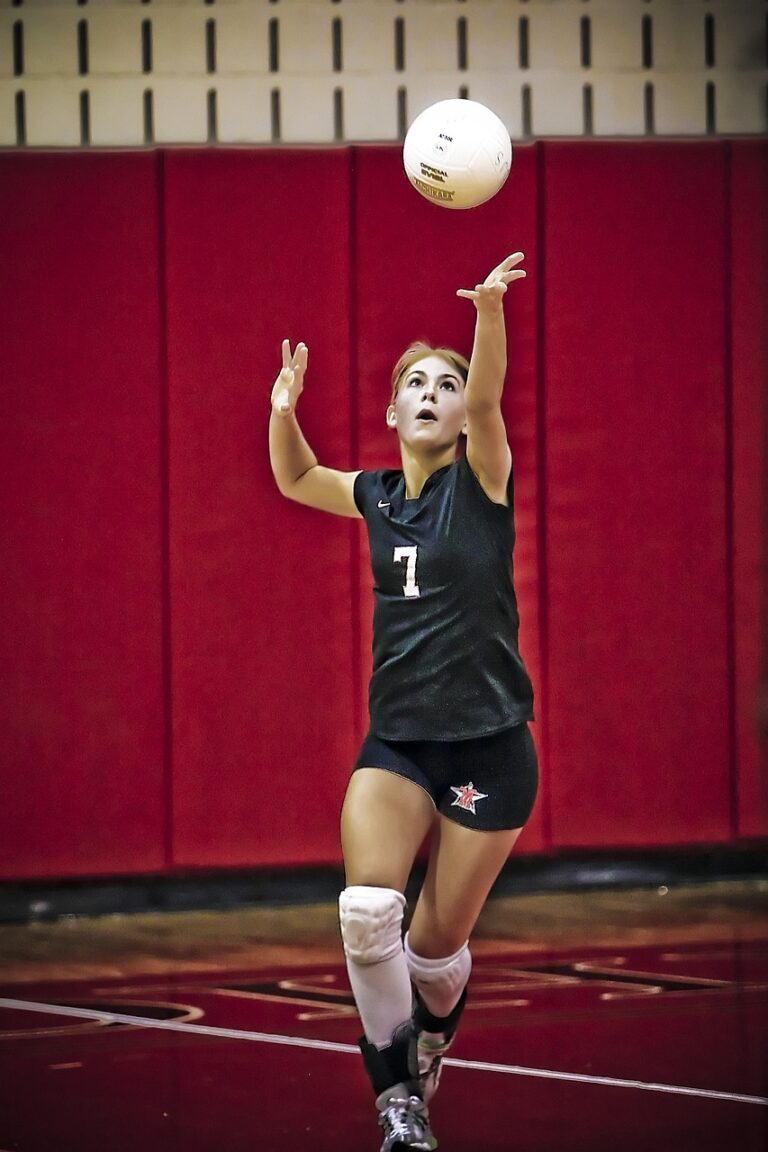How to coach Volleyball in 2023 with Confidence
Volleyball is a popular sport enjoyed by people of all ages and skill levels. But how to coach Volleyball in 2023 to elevate your players to the next level? Whether you’re a seasoned player or a beginner looking to learn the game, teaching volleyball in 2023 requires a well-structured approach that incorporates modern coaching techniques and takes advantage of the latest advancements in the sport.
“How to coach Volleyball in 2023 with Confidence” will guide you through the process of teaching volleyball effectively, providing you with valuable insights and strategies to make your coaching sessions engaging and successful.
Most importantly, we will learn on how to not overwhelm your players with everything from the get-go. More on that later.
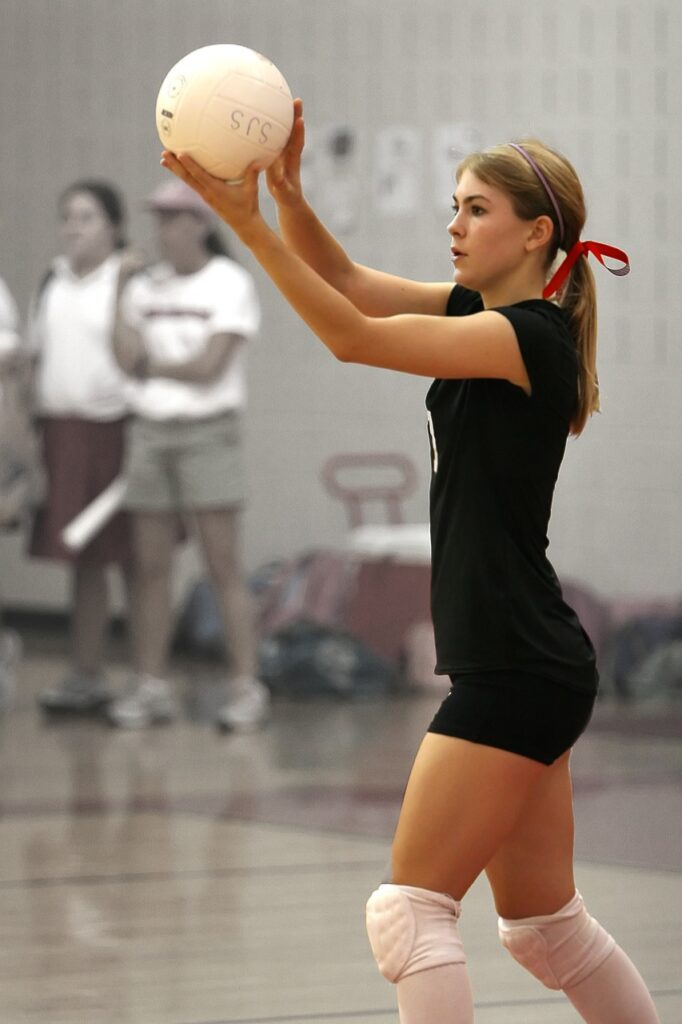
How to coach volleyball?
You know this feeling when everything is flowing, every attack smashes in your opponent’s court and your defense seems impenetrable? There’s high five’s all around and your team just keeps on making those beautiful plays over and over?
That’s what happens when each individual player is sure of their role on the court and when they have the vision and strength to fulfill it.
That’s confidence.
As a volleyball coach, your ultimate goal is just that: You want your players to be confident.
Confidence leads to less hesitation, better plays, and more fun while playing the sport we love.
Here are the 5 necessary steps on How to coach Volleyball to bring your players to the next level.
Step 1: Understanding the game of Volleyball
For beginner players
- For beginner players we can’t start with 5-1 or 6-2 systems, those are way too advanced.
Instead, let’s focus on the game itself.
1. Your team serves
2. The opponents will do their utmost to bring this ball back into your court.
3. They want to make it as difficult as possible for your players to minimize your chances to the same back right at them.
4. One team finally makes a play which prevents the other team from getting the ball back.
5. This team is awarded a point and is allowed to serve for the next round.
For coaching beginner players, this is all they need to understand.
Implement this into your game while coaching Volleyball:
- Maximize your chances by playing three times, meaning passing, setting and attacking.
- Let them cover as much space on the court by spreading out evenly
- Make it a habit to call for the ball
- Everyone is playing every position, full rotation
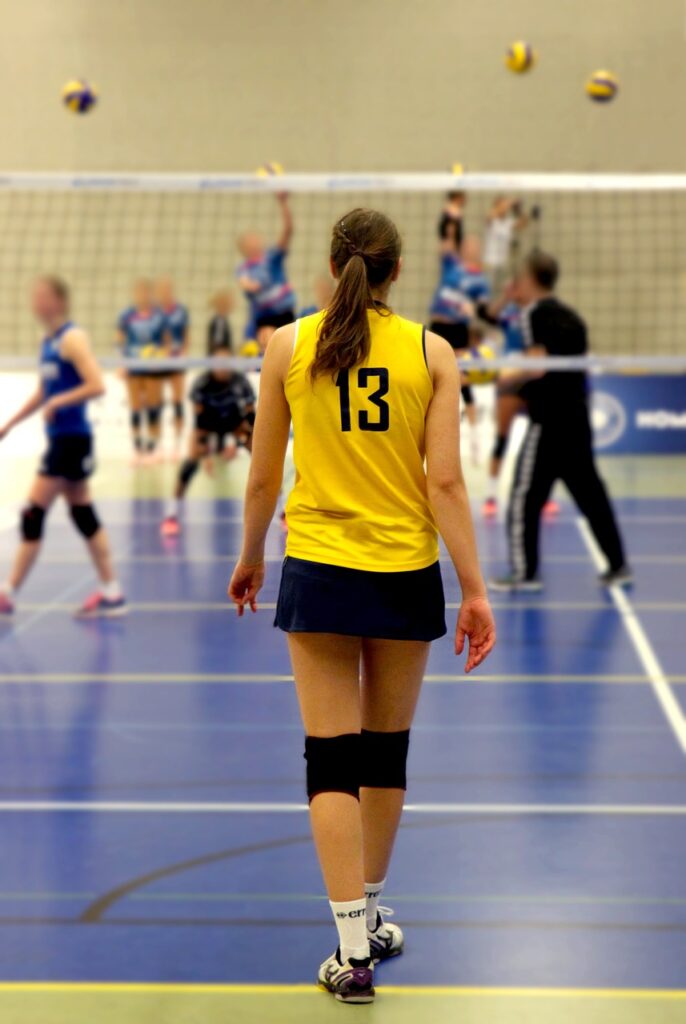
For advanced players
Let’s build on the fundamentals and maximize our chances to score a point and not get scored on.
We’re talking about rotation systems.
- 4-2 system
4 hitters, 2 setters. Let your players with the best control over the ball set, so that your best attackers have the best chances to score a point.
Your setters set from the front row to not confuse your own team about the rotation. You should start here when you first introduce systems. - 6-2 system
Now you’ve got 6 full hitters and 2 designated setters. How?
Because your setters hit too when they are in the front row.
In this system, the setter for your team pushes forward from the back row to set all three players in the front row. Instead of 2 attackers, now you’ve got 3 in the front row. - 5-1 system
There’s only one designated setter for all of you 5 hitters. This is the most specific and structured approach to maximize your players to their advantage.
Be careful with this system to not confuse your team about their positioning. If you introduce these systems too early and without the proper understanding of your players, the ensuing chaos will lose you more points than you’ll win with this system.
Step 2: How to coach Volleyball to increase their chances to score
Give them reasons to do something like you want to
By making your players aware of why they do something in a specific way, they will start to think on their own. This is why it is crucial to understand the game first, than focusing on the the advantages of rotation systems before diving deeper into each individual role.
We can now start to break it down for the individual player roles.
- Always remind your players to think about how to maximize their chances to score. That’s the essence on how to coach Volleyball in 2023.
Attackers should think about how to attack different angles and sections of the court.
- Smash it
- Place it on the lines
- Tip it
- Target specific opponents
- Their setter
- Someone bad at receiving
Setters should think about how to maximize their attacker’s and your team’s chances to score.
- High sets
- Fast sets
- Back row sets
- Dunk it themselves
While receiving, always think about how to make it the easiest for your setter.
- High receive to give time
- Front row to set parallel to the net
- Give the setter options to do whatever he wants
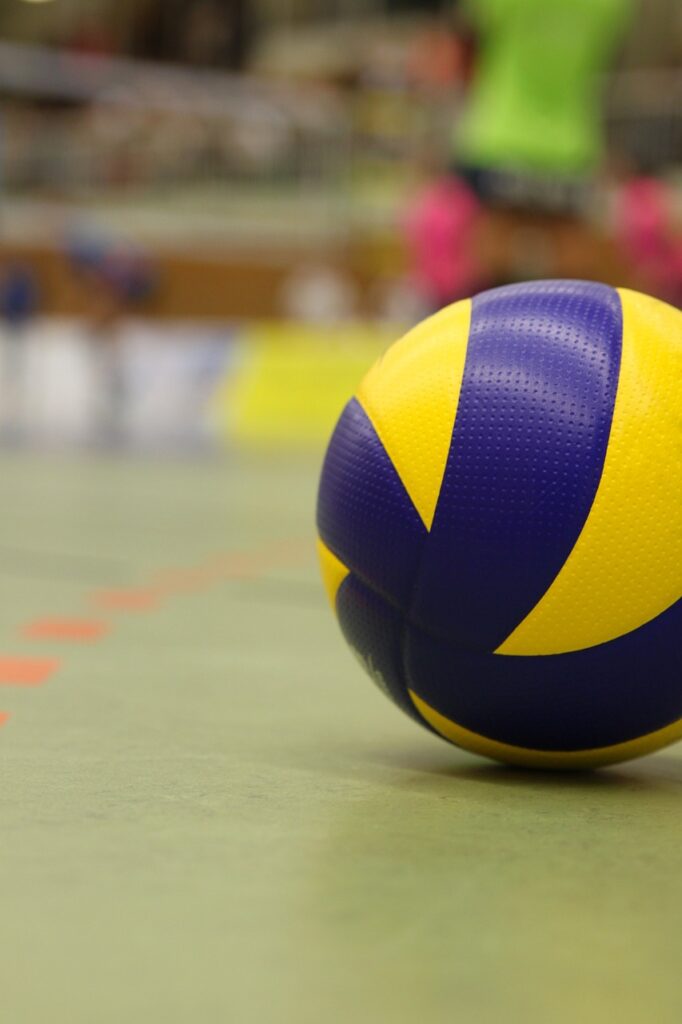
Visualizing is your best friend
To help your players think about their players, there is nothing better than something called visualization. Learning how to coach Volleyball players in 2023 would not be the same without it.
- What would a good receive look like?
- What would a good set look like?
- What would a good attack look like?
This helps your players break down this whole process into manageable steps and will automatically lead to better results.
Step 3: Coaching Volleyball is about breaking it down to the basics
How to serve a volleyball with strategic intent
Serving is a critical aspect of volleyball that can significantly impact the outcome of a game.
Rather than simply getting the ball over the net, players should approach their serves with the intention of scoring points. This is the modern volleyball and should be included in one of the first thoughts when thinking about how to coach Volleyball.
By strategically targeting weak receivers, anticipating the setter’s path, serving the lines, and incorporating variation, players can maximize their chances of success and keep the receivers guessing.
- When serving, aim to exploit the weaknesses of the opposing team’s receivers. Observe their positioning and movement patterns to identify potential vulnerabilities. Direct your serves towards those areas to put pressure on the receivers and increase the likelihood of an ineffective pass.
- Another strategic approach is to serve towards the path where the setter crosses the court. Disrupting the setter’s movement and timing can throw off the team’s offensive play and create scoring opportunities for your side. By serving to the setter’s intended path, you force them to make adjustments and potentially disrupt their ability to set up effective attacks.
- Serving the lines is another effective tactic. By targeting the sidelines, you make it challenging for the receivers to accurately judge whether the ball is in or out. This creates uncertainty and can lead to hesitation or miscommunication among the receiving team, increasing the chances of an error and allowing your team to gain an advantage.
- To keep the receivers on their toes, always change up your serves. By utilizing different serving techniques such as float serves, jump serves, or spin serves, you introduce variation and make it difficult for the receivers to anticipate the trajectory and speed of the ball. Mix up your serving locations, spin, and power to maintain unpredictability and keep the opposing team guessing.
Remember, serving is not just about getting the ball over the net. It’s an opportunity to create advantages, disrupt the opposing team’s gameplay, and directly contribute to scoring points. By serving with strategic intent, targeting weak receivers, and the setter’s path, serving the lines, and incorporating variation, you can elevate your serving game and make a significant impact on the outcome of matches.
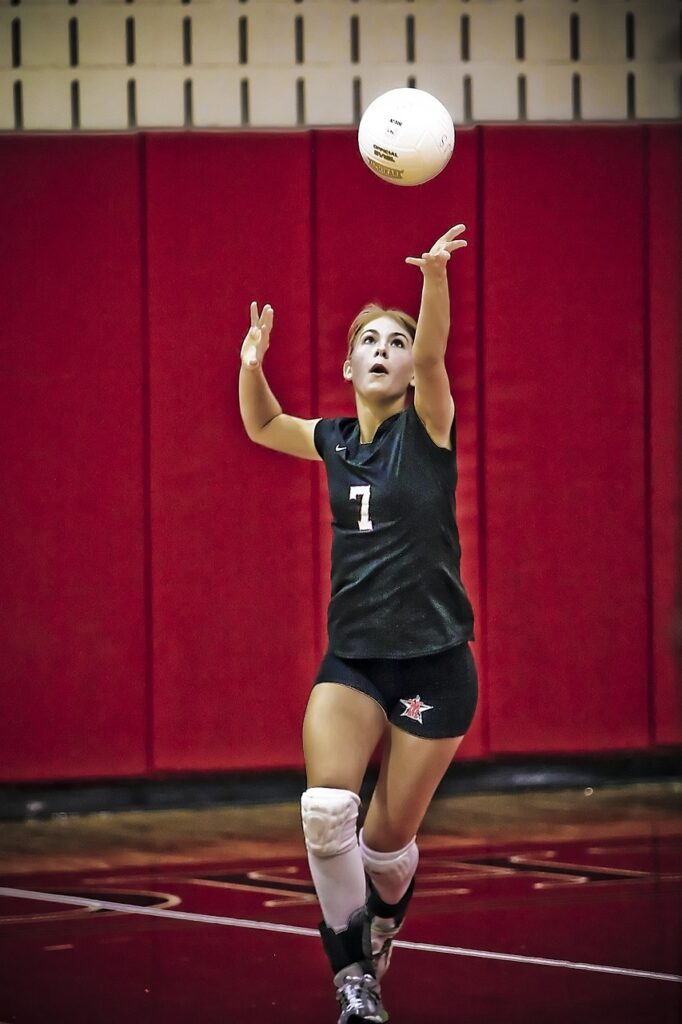
Pass the ball to the setter with precision and ease
Passing the volleyball accurately to the setter is crucial for setting up successful attacks and maximizing the chances of scoring points. To make it as easy as possible for the setter and ensure a smooth transition, players should focus on providing a pass with good height, allowing teammates to get into position for their attacks. Additionally, maintaining a calm and controlled demeanor during the reception is essential for consistent and accurate passes. Teaching those fundamentals to stay calm in high pressure situations is also a crucial aspect of learning how to coach Volleyball in the modern sports era.
- When receiving the ball, aim to pass it with a height that allows the setter to comfortably reach and set it. This height gives the setter more time to assess the play, make decisions, and position themselves effectively for the next play. Strive for a pass that is high enough to clear the net but not excessively high, as it can limit the setter’s options and delay the attack.
- To achieve a good height in your pass, focus on using your legs and generating power from your lower body. Bend your knees and prepare to explode upward as the ball approaches. By using your legs to generate upward force, you can lift the ball with greater control and precision.
- While receiving the ball, it is essential to remain calm and composed. Hectic and uncontrolled movements often lead to inaccurate passes. Maintain a relaxed yet alert stance, with your feet shoulder-width apart and weight evenly distributed. Keep your eyes on the ball and track its trajectory, anticipating its path to position yourself optimally for the pass.
- As the ball approaches, focus on using your forearms to make contact. Create a platform with your arms by placing your wrists together, forming a solid surface for the ball to rebound off. Angle your forearms slightly upward to direct the ball’s trajectory toward the setter’s position. Make sure to make a clean and controlled contact with the ball, avoiding excessive force that may result in erratic passes.
- Communication with your teammates is crucial during the pass. Use verbal cues, hand signals, or eye contact to coordinate with the setter and other players. Clear communication ensures that everyone is on the same page and can make quick adjustments if needed.
By passing the ball with precision, good height, and composure, you provide the setter with the best opportunity to deliver an effective set for your team’s attack. Practice your passing technique, develop coordination with your teammates, and focus on remaining calm under pressure to consistently deliver accurate passes.
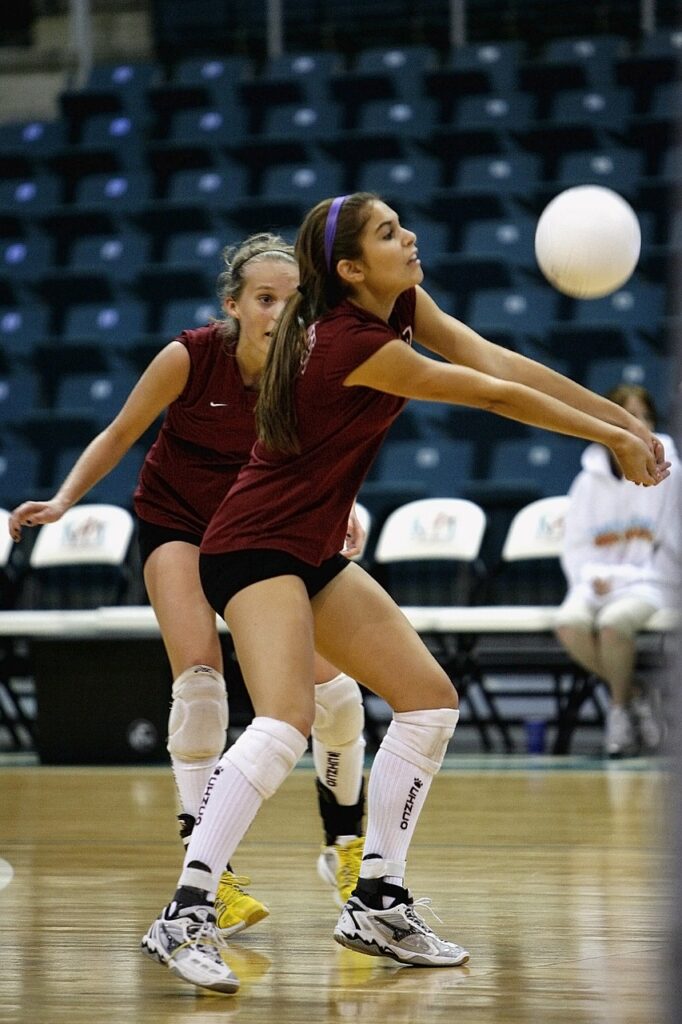
How to Set a Volleyball to the Attackers with Strategy and Precision
As a setter, your role is vital in orchestrating effective attacks and maximizing your team’s chances of scoring. To achieve this, it’s crucial to think about how to optimize your attackers’ opportunities while minimizing the risks. By considering various strategies and executing precise sets, setters can elevate your team’s offensive game. Here’s how to coach Volleyball setters in 5 steps:
- When faced with a bad pass, it’s essential to remain composed and focus on providing your attackers with viable options. Rather than forcing a risky play or attempting a difficult set, consider alternative solutions. One effective option is to execute a high set to the backrow attacker. By delivering the ball with an elevated trajectory, you allow your backrow attacker to generate more power and exploit the opposing team’s defense. This high set can create scoring opportunities and keep the opponents guessing.
- In addition to high sets, incorporating fast sets into your arsenal can be highly effective. Fast sets, also known as quick sets or tempo sets, involve delivering the ball to the attackers at a higher pace, catching the opposing blockers off guard. Fast sets require coordination and timing between the setter and the attacker. By executing quick sets, you create an advantage by reducing the amount of time the blockers have to react, enabling your attackers to exploit gaps in the defense and score more efficiently.
- Backrow sets are another valuable tool for setters. When your backrow attacker is in an advantageous position, delivering a well-placed set to the back row can be a game-changer. By utilizing backrow sets, you open up additional attacking options and force the opposing team to defend a larger area of the court. This can create imbalances in the defense and create opportunities for your team to score.
- In certain situations, setters can even “dunk” the ball themselves. A setter dump involves quickly redirecting the ball over the net instead of setting it for an attacker. This unexpected move catches the opposing team off guard, as they may be anticipating a set for one of your attackers. Setter dumps can be particularly effective near the net or when the defense is focused on covering your hitters.
- Remember to communicate effectively with your attackers, informing them about the type of set you are about to deliver. This allows them to adjust their positioning and approach accordingly. Good communication ensures that everyone is on the same page and maximizes the effectiveness of your sets.
By employing strategies such as high sets, fast sets, backrow sets, and occasional setter dumps, you can enhance your team’s offensive capabilities. Develop your setting skills, maintain a strong connection with your attackers, and adapt your strategies based on the game situation to set the stage for successful attacks and increased scoring opportunities.
How to Attack a Volleyball to consistenly Score Points
As an attacker, your role is pivotal in scoring points for your team. To maximize your chances of success, it’s crucial to consider various strategies and techniques when attacking the volleyball. By incorporating a combination of power, precision, and strategic thinking, you can create opportunities to outmaneuver the opposing team’s defense. Here’s how to coach Volleyball attackers in 6 steps.
- One of the most aggressive ways to attack the volleyball is to smash it with power and velocity. This involves hitting the ball with a forceful and downward trajectory, aiming to overpower the blockers and find open areas on the court. By generating significant power behind your spike, you can make it difficult for the defenders to control the ball, increasing the likelihood of scoring a point.
- In addition to power, precision is key when attacking. Consider placing your attacks on the lines of the court, targeting the boundaries of the opponent’s side. By aiming for the lines, you force the defenders to make split-second decisions about whether the ball is in or out of bounds, increasing the chances of catching them off guard and scoring a point.
- Another effective technique is to tip the ball over the blockers. Instead of delivering a powerful spike, lightly touch the ball with your fingertips to guide it over the outstretched hands of the blockers. Tipping can be useful when the opposing defense is well-prepared for a powerful attack, allowing you to exploit the holes in their coverage and score points with finesse.
- Strategic targeting of specific opponents can also be advantageous. Assess the opposing team’s weaknesses and identify vulnerable players, such as their setter or individuals who struggle with receiving. By directing your attacks toward these players, you put pressure on them and exploit their limitations, creating opportunities for your team to gain an advantage.
- Furthermore, consider adjusting your attacking angles. Instead of always attacking straight on, explore different sections of the court. By attacking from different angles, such as cross-court or down the line, you keep the defense guessing and make it challenging for them to anticipate your next move. This variation in attacking angles can open up gaps in the defense and increase your chances of finding open areas to score.
- Remember to communicate with your teammates, especially the setter, to ensure a smooth connection and coordination during the attack. Effective communication allows for better timing, positioning, and decision-making, ultimately leading to more successful attacks.
By incorporating a combination of powerful smashes, precise placement, well-executed tips, targeted attacks, and varying your angles of attack, you can become a formidable attacker and contribute significantly to your team’s scoring efforts. Develop your attacking skills, analyze the opponent’s defense, and adapt your strategy based on the situation to maximize your effectiveness on the court.

How to Block a Volleyball to Disrupt the Opponent’s Attack
Blocking in volleyball is a crucial defensive technique that can directly score points or make the job easier for your defenders. A well-executed block reaches over the net, taking away options from the attackers and forcing them into unfavorable positions. By strategically closing out sections of the court, you limit the attackers’ choices and provide your defenders with a smaller area to cover, increasing the chances of a successful defensive play. Here’s how to coach Volleyball blocking in 5 steps:
- When approaching a block, it’s essential to analyze the opponent’s attacking patterns and tendencies. Observe their positioning, hitting angles, and preferred shots. By understanding their strengths and weaknesses, you can anticipate their next move and position yourself accordingly to disrupt their attack.
- To execute an effective block, focus on closing out options and sections of the court. Work with your teammates to form a solid defensive wall at the net. This involves reaching over the net with your hands, denying the attackers access to certain areas. By closing gaps and taking away available angles, you force the attackers to make adjustments and potentially make errors.
- Communication with your teammates is vital during the blocking process. Coordinate with your fellow blockers to ensure proper positioning and coverage. By communicating effectively, you can shift the blocking strategy based on the opponent’s set and attacker’s positioning, effectively closing off their preferred hitting options.
- When blocking, keep an eye on the setter’s movements and be ready to adjust your positioning accordingly. Anticipate the setter’s decisions and try to disrupt the timing and flow of their offense. By taking away the setter’s preferred passing options, you can limit the quality of their sets and make it more challenging for the attackers to execute powerful hits.
- Remember that effective blocking is not just about reaching over the net; it’s also about timing and technique. Work on your footwork and timing to ensure that you jump at the right moment, maximizing your reach and reducing the attackers’ hitting options. Maintain an active and athletic stance, ready to react quickly to the opponent’s movements.
By executing a strong and strategic block, you can disrupt the opponent’s attack, limit their options, and provide your defenders with a smaller area to cover. Analyze the opponent’s tendencies, communicate with your teammates, and focus on closing out sections of the court to maximize the effectiveness of your blocks.
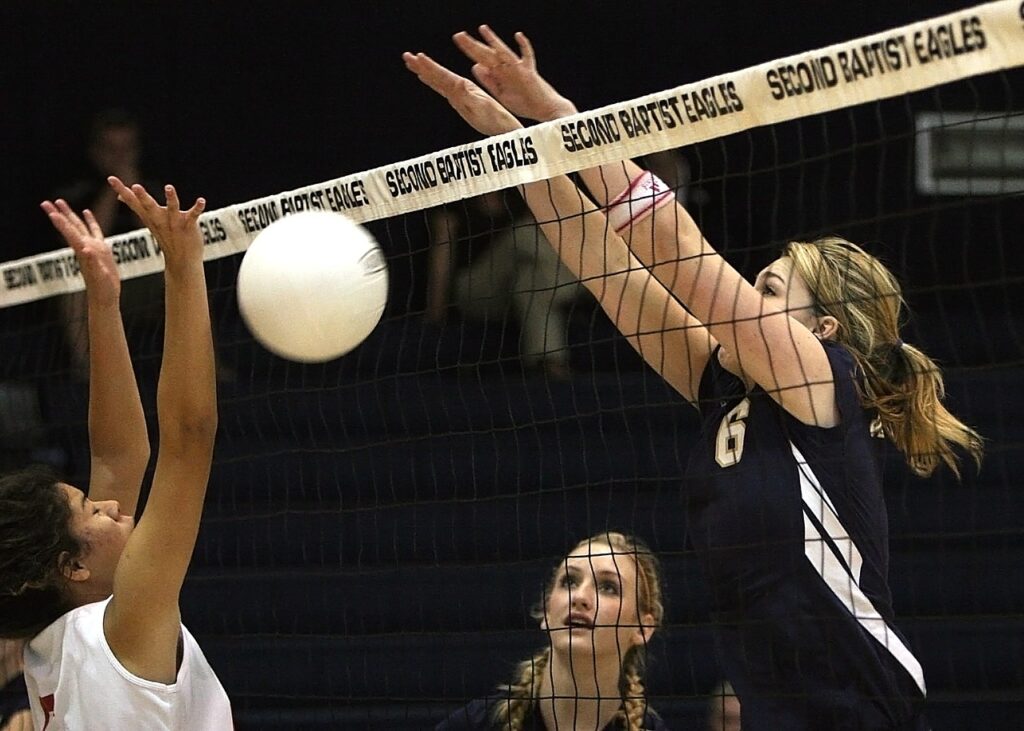
Step 4: Setting Up Effective Drills for Volleyball Players: Focusing on Purpose and Progression
When designing drills for volleyball players, it’s crucial to prioritize their understanding of the “why” behind each drill and how it contributes to their development. The drill serves as a means to achieve a specific goal, shaping them into better players. By emphasizing clarity, focus, and progression, you can create effective training exercises that facilitate skill improvement and build a solid foundation for success. Here’s how to coach Volleyball drills:
- First and foremost, ensure that players comprehend the purpose of each drill and how it directly helps them enhance their skills. Clearly communicate the objectives, whether it’s improving footwork, enhancing communication, or perfecting a specific technique. By providing context and emphasizing the benefits of the drill, players will be more engaged and motivated to actively participate.
- The drill represents the “how” to achieve the desired outcome. It’s essential to structure the drill in a way that effectively translates the desired skill or concept into practical application. Break down complex movements or techniques into smaller, manageable steps. Focus on creating a progression that gradually introduces and reinforces key elements, allowing players to build muscle memory and develop proficiency step by step.
- To ensure optimal learning and development, it’s important to emphasize that drills should primarily focus on one aspect at a time for each player. Overloading players with multiple things to think about simultaneously can be counterproductive and hinder their progress. Instead, encourage players to concentrate on mastering one specific skill or technique before moving on to the next. By honing each element individually, players can develop a solid foundation and incorporate them into their overall performance seamlessly.
- Muscle memory plays a significant role in skill acquisition, so repetition and consistency are key. Encourage players to practice drills consistently to reinforce proper technique and develop muscle memory. As players repeat the drill, encourage them to focus on the specific elements being targeted, gradually incorporating them into their overall performance. By taking a step-by-step approach, players can internalize each skill, allowing them to execute movements more instinctively during actual gameplay.
- Incorporating a variety of drills that target different aspects of the game is essential for well-rounded player development. Design drills that address specific skills, such as serving, passing, setting, or attacking. Additionally, consider incorporating game-like scenarios and decision-making drills to enhance players’ ability to apply their skills in real-game situations.
By setting up drills that prioritize players’ understanding of the purpose, focusing on one element at a time, and promoting muscle memory through repetition, you can create effective training sessions that facilitate skill development and foster the growth of well-rounded volleyball players. Remember, the goal is to shape players into better athletes by providing purposeful drills that align with their development needs.
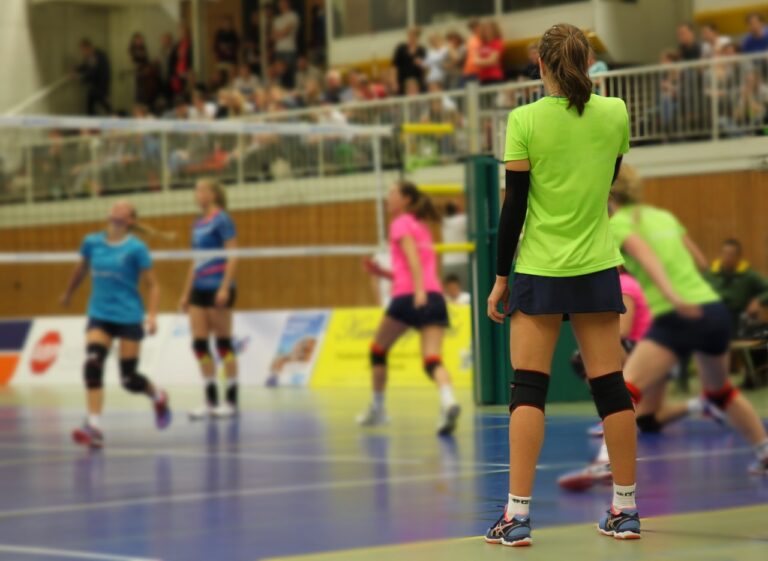
Step 5: Coaching Volleyball is about setting rewarding goals
What’s a rewarding goal?
Setting rewarding goals for your volleyball team is a crucial aspect on how to coach Volleyball in 2023 and should not be neglected.
Recognize and acknowledge the team’s accomplishments through verbal praise, certificates, or team celebrations. Rewards will serve as a powerful motivator and instill a sense of pride and accomplishment.
Rewarding goal examples
Match-based examples are goals that happen during one match, sometimes even during one set. It can help your team to reflect and to push themselves into the next set with even more motivation.
- Best attack of the match
- Best block of the match
- Best save of the match
- Most serving aces in a match
- Most won points in a row
Long-term-based examples can be presented at the end of a season, rewarding players with the time and effort they brought into the team.
- Most training participations
- Most match game appearances
Team-based goals can inspire competition while making your players aware of the progress they went through from the start of the season till now.
- Compare jumping height and keep track
- Talk about highlights and the best team plays
- Video material and highlight reels can support that immensely
Bonus: Celebrate every point like you’ve won the game
Celebrating points is underrated
Celebrating the points your team has won is extremely underrated. Both you and the players have worked hard to achieve this. Celebrate it accordingly.
Not only will this push your team, moreover, it will also push you even further, while you learn new things about your players, and new things on how to coach Volleyball.
If you’re new to celebrating a point, start not only celebrating when you win a set at 25.
Everyone knows that feeling when it’s 23 – 23 and both teams, suddenly, take two extra steps for every play, hit harder, and be extra quick on their feet.
Point number 7 counts just the same as point number 24. We just don’t see the necessity at first.

What if we could introduce this level of motivation way earlier?
Start way earlier by reaching 10 points before the opponent’s team does, followed by 20 points as your next milestone.
Imagine your team is leading 9 – 8 and it is match point already.
Try this approach with your team and see for yourself, how effective a little bit of perspective change can be.
Now you’ve got your magic goals set up before you. Make sure your whole team is aware of that.
- 10 points
- 20 points
- 25 points
Next time, introduce the milestones of 5 and 15 as well.
- 5 points
- 10 points
- 15 points
- 20 points
- 25 points
Before you know it, it has become the norm to celebrate every point like match point.
Summary
In conclusion, coaching volleyball in 2023 demands a comprehensive approach that goes beyond merely teaching the technical aspects of the game. It requires coaches to have a deep understanding of the sport, including its rules, strategies, and evolving trends. By gaining a thorough grasp of the game, coaches can effectively guide their players and make informed decisions during matches. “How to coach Volleyball in 2023” focused heavily on the mental aspect of the game and to let the players think for themselves.
Maximizing scoring chances
Maximizing scoring chances is a crucial aspect of coaching. Coaches must encourage their players to adopt an attacking mindset and seize opportunities to score points. By instilling the importance of strategic thinking and decision-making, coaches can empower players to make intelligent choices on the court. Whether it’s targeting weak receivers, exploiting gaps in the opponent’s defense, or utilizing precise serves, coaches should emphasize the significance of scoring effectively.
Breaking down skills
Breaking down skills into their fundamental components is essential for player development. Coaches should provide players, both beginners and advanced, with clear and concise instructions on serving, passing, setting, attacking, and blocking. By breaking these skills down and focusing on each component individually, players can gradually build their proficiency and ensure proper technique.
Implementing effective drills
Implementing effective drills is a cornerstone of successful coaching. Coaches should design drills that target specific areas of improvement, promote muscle memory, and simulate game-like scenarios. These drills should be structured, progressive, and challenging enough to stretch players’ abilities while allowing for steady growth. By incorporating a variety of drills, coaches can address different aspects of the game and keep practice sessions engaging and dynamic.
Setting rewarding goals
Setting rewarding goals is a powerful motivator for players. Coaches should work with their team to establish both individual and team-oriented goals that are attainable yet challenging. These goals should be clearly defined, measurable, and provide a sense of purpose and direction. By regularly assessing progress and providing feedback, coaches can help players stay motivated and strive for continuous improvement.
Celebrate
Fostering a celebratory team environment is vital for building cohesion and morale. Coaches should encourage players to celebrate every point, regardless of the outcome. Recognizing and appreciating small achievements not only boosts confidence but also reinforces a positive team culture. By creating a supportive and uplifting atmosphere, coaches can inspire their players to perform at their best and develop a strong sense of camaraderie.
Coaching volleyball in 2023 requires a comprehensive and multifaceted approach. It entails understanding the game, maximizing scoring chances, breaking down skills, implementing effective drills, setting rewarding goals, and fostering a celebratory team environment. By following these principles, coaches can inspire confidence, drive improvement, and lead their teams to success both on and off the court.
I hope “How to coach Volleyball in 2023 with Confidence” helps you immensely on your journey and leads us to elevate the sport and the players to newer heights!



